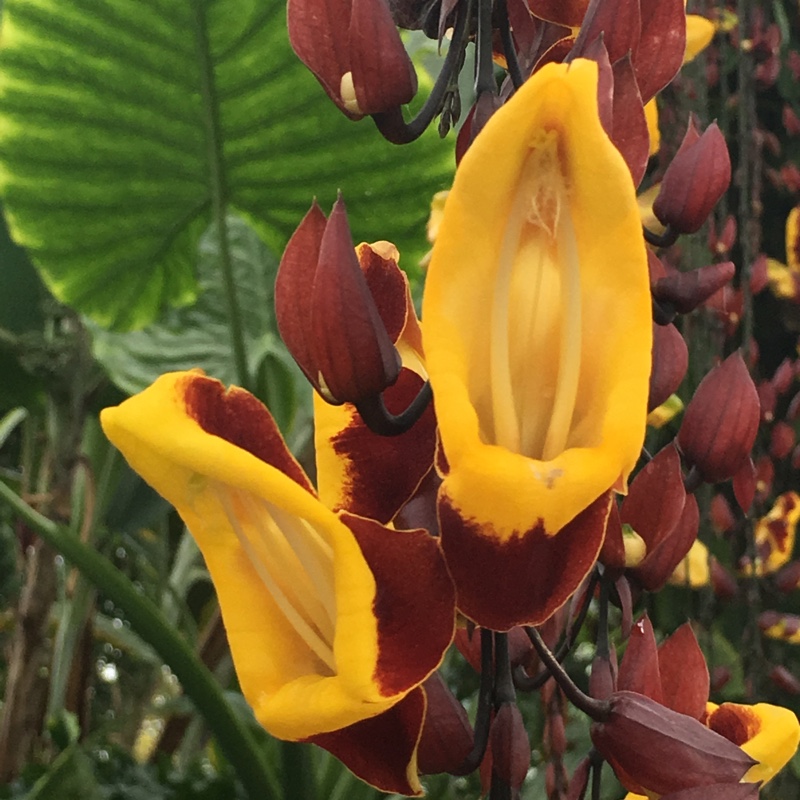
Thunbergia mysorensis
Indian Clock Vine
Thunbergia mysorensis - Indian Clock Vine - has show-stopping red and yellow flowers. Due to its tropical origins, in cooler climes it needs to be grown in a greenhoue for part of the year, although it will be happy outdoors in warmer months. If outdoors, will need ample water, but well-draining soil
Contributed by @mr_plantgeek
-
Full sun
-
Occasional watering
-
Frost Hardy: 23F (-5°C)
-
Moist and free draining
Common name
Indian Clock Vine
Latin name
Thunbergia mysorensis
type
Climber
family
Acanthaceae
ph
5.6 - 7.9 Acid - Neutral
Plant & bloom calendar
-
Best time to plant
-
When the plant will bloom
full grown dimensions
 1.00 M
2.00 M
1.00 M
2.00 M
Thunbergia mysorensis
Thunbergia mysorensis - Indian Clock Vine - has show-stopping red and yellow flowers. Due to its tropical origins, in cooler climes it needs to be grown in a greenhoue for part of the year, although it will be happy outdoors in warmer months. If outdoors, will need ample water, but well-draining soil
Flowering Season
From Early Summer TO Early Autumn
Yellow-orange flowers with a black eye.
Planting Season
From Mid Spring TO Late Spring
Plant out container grown plants into a sunny, moist and reasonably sheltered flowering position.
Propagation by Seed
From Late Winter TO Mid Spring
Fill a seed tray with seed compost,water and allow to drain.Sprinkle seeds over the surface allowing roughly 25mm space between seeds and cover with a thin layer of compost. Put tray in a clear polythene bag and place on a windowsill. When seedlings show remove plastic bag.When the second pair of leaves appear on the seedlings thin out to 50mm spacing by removing the weakest looking plants. After 2 or 3 weeks and when danger of frost has passed plants can then be planted outside into required position.
Propagation by cuttings
From Mid Spring TO Early Summer
Take soft wood cuttings in spring to early summer. Cleanly cut up to a 10cm long stems, remove lower leaves and pinch the tip out, dip the stem into rooting hormone, fill a container/pot with suitable compost, make holes around the edge of it and plant the cuttings, water in well, cover with a polythene bag and place somewhere warm, lake the bag off twice a week to air the cuttings. Keep the cuttings moist until well rooted.Harden off when well rooted and pot on into individual pots increasing the airing to let the leaves to develop. Remove rotten, dying or dead cuttings regularly.











